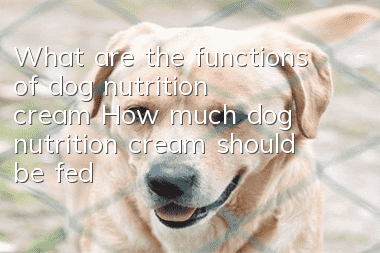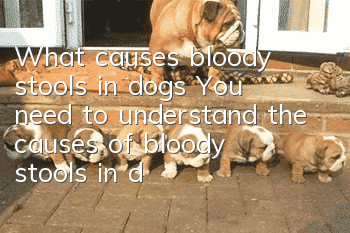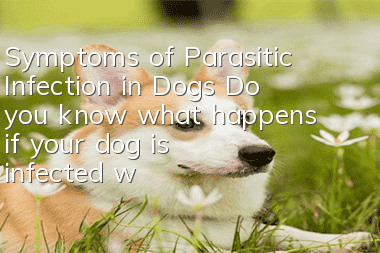How to choose a Husky puppy? Do you know these points?

Method 1 for selecting Husky puppies: Look at the puppy’s appetite
Eating, drinking, playing, sleeping, and excretion are the four major needs of puppies for normal growth. Puppies that have just changed their environment and changed their food may temporarily lose their appetite. However, puppies with severe dehydration, latent diseases, gastroenteritis and physical pain will also lose their appetite. In this case, the owner should maintain a wait-and-see attitude, ask the store clerk about the feeding time, and then arrange a visit to observe the changes.
Method 2 for selecting a Husky puppy: Look at the puppy’s nose
A healthy puppy should have no runny nose. Pets with colds, nasal allergies or upper respiratory tract infections will have runny noses. After a puppy is infected with bacteria, the nose secretions will turn into milky white, yellow or green pus. In addition, if food spurts out of the nostrils, it means that the puppy eats too quickly, has problems with its swallowing mechanism, or the puppy has congenital structural defects.
Method Three for Selecting Husky Puppies: See if the Puppy Coughs
Puppies catching cold, sensitive throat, turbid air environment, tracheitis and bronchitis can all cause puppies to cough. Severe cough combined with excessive phlegm can lead to decreased appetite and poor nutrition.
Method 4 for selecting Husky puppies: Look at the puppy’s body
Body fatness has always been a traditional indicator used to measure biological nutritional status. If the body is thin and lacks physical strength, the development of immunity will naturally be affected, making it easy to get sick and slow to recover. There are two points to note here. First, the indicator of fatness and thinness is the body under the fur. Second point, a big belly does not necessarily mean obesity. A normal puppy's chest and ribs should be evenly covered with muscles and fat, and the chest and ribs are not easy to be clearly touched. If you gently rub it with your hands, the chest will be as obvious as a washcloth. Even if it has longer coat, this dog is too thin. In addition, the fatness of a dog can also be measured by the thickness of the muscles on the back of the abdomen.
Method 5 for selecting a Husky puppy: Look at the puppy’s eyes
A healthy puppy’s eyes should be bright and lively, and the cornea of the eye should be transparent, allowing people to clearly see eye pigments The color of the layer. The hepatitis virus can turn the cornea blue, and foreign matter entering the eye or trauma can cause the puppy's eyes to swell and close tightly, the mucous membrane to turn red, or the cornea to turn white. Infection with canine distemper virus and other eye diseases can cause abnormal eye discharge and suppuration.
Method 6 for selecting Husky puppies: Look at the poop of puppies
Normal puppy poop is in the shape of mud and glue. Just changing the environment, food or overfeeding, worms and enteritis can cause diarrhea in puppies. If your stool is softer than toothpaste or contains clear mucus, pick carefully.
Method 7 for selecting a Husky puppy: Look at the puppy’s skin
A healthy puppy’s skin should be free of pustules and excessive dander. Dry skin, sensitive skin, or external parasites can cause your dog to scratch and produce a lot of dandruff. If the living environment is not clean or the dog is neglected, the puppy's skin will easily develop red spots and pustules, seriously affecting the puppy's appearance.and smell. Finally, the owner should check the puppy’s vaccination record and verify the dog’s identity information.
Eating, drinking, playing, sleeping, and excretion are the four major needs of puppies for normal growth. Puppies that have just changed their environment and changed their food may temporarily lose their appetite. However, puppies with severe dehydration, latent diseases, gastroenteritis and physical pain will also lose their appetite. In this case, the owner should maintain a wait-and-see attitude, ask the store clerk about the feeding time, and then arrange a visit to observe the changes.
Method 2 for selecting a Husky puppy: Look at the puppy’s nose
A healthy puppy should have no runny nose. Pets with colds, nasal allergies or upper respiratory tract infections will have runny noses. After a puppy is infected with bacteria, the nose secretions will turn into milky white, yellow or green pus. In addition, if food spurts out of the nostrils, it means that the puppy eats too quickly, has problems with its swallowing mechanism, or the puppy has congenital structural defects.
Method Three for Selecting Husky Puppies: See if the Puppy Coughs
Puppies catching cold, sensitive throat, turbid air environment, tracheitis and bronchitis can all cause puppies to cough. Severe cough combined with excessive phlegm can lead to decreased appetite and poor nutrition.
Method 4 for selecting Husky puppies: Look at the puppy’s body
Body fatness has always been a traditional indicator used to measure biological nutritional status. If the body is thin and lacks physical strength, the development of immunity will naturally be affected, making it easy to get sick and slow to recover. There are two points to note here. First, the indicator of fatness and thinness is the body under the fur. Second point, a big belly does not necessarily mean obesity. A normal puppy's chest and ribs should be evenly covered with muscles and fat, and the chest and ribs are not easy to be clearly touched. If you gently rub it with your hands, the chest will be as obvious as a washcloth. Even if it has longer coat, this dog is too thin. In addition, the fatness of a dog can also be measured by the thickness of the muscles on the back of the abdomen.
Method 5 for selecting a Husky puppy: Look at the puppy’s eyes
A healthy puppy’s eyes should be bright and lively, and the cornea of the eye should be transparent, allowing people to clearly see eye pigments The color of the layer. The hepatitis virus can turn the cornea blue, and foreign matter entering the eye or trauma can cause the puppy's eyes to swell and close tightly, the mucous membrane to turn red, or the cornea to turn white. Infection with canine distemper virus and other eye diseases can cause abnormal eye discharge and suppuration.
Method 6 for selecting Husky puppies: Look at the poop of puppies
Normal puppy poop is in the shape of mud and glue. Just changing the environment, food or overfeeding, worms and enteritis can cause diarrhea in puppies. If your stool is softer than toothpaste or contains clear mucus, pick carefully.
Method 7 for selecting a Husky puppy: Look at the puppy’s skin
A healthy puppy’s skin should be free of pustules and excessive dander. Dry skin, sensitive skin, or external parasites can cause your dog to scratch and produce a lot of dandruff. If the living environment is not clean or the dog is neglected, the puppy's skin will easily develop red spots and pustules, seriously affecting the puppy's appearance.and smell. Finally, the owner should check the puppy’s vaccination record and verify the dog’s identity information.
Random articles
- Dog external parasites. Do you know what dog parasites are divided into?
- What are the prenatal signs for a Czech Terrier? What preparations should be made for a Czech Terrier before giving birth?
- How to deal with postpartum lochia in Czech Terrier. How to deal with postpartum lochia in Czech Terrier.
- What to do if your Bichon Frize has a cold? See here for scientific treatment
- What to eat if Corgi loses hair severely? Nutrition experts are here to help
- What medicine should dogs take if they have blood in their stools? Are dogs still taking medicine if they have blood in their stools?
- What to do if your dog doesn’t like to drink water? You must know these six things
- What should you pay attention to when choosing a Husky? Do you know these points?
- How to choose a Teddy puppy? What should you pay attention to?
- Why don’t German Shepherds have erect ears? Four reasons why German Shepherds don’t have erect ears.



